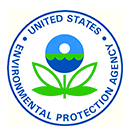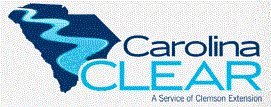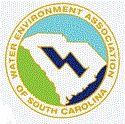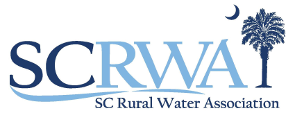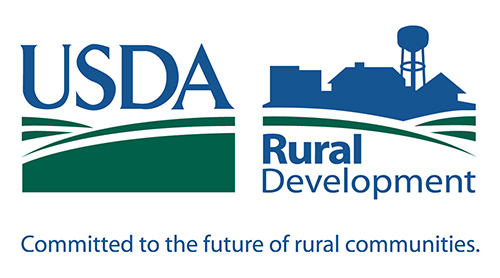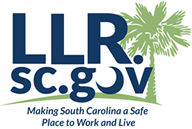Cross Connection Control and Backflow Prevention

Cross Connection Control and Backflow Prevention
The Cross Connection Control and Backflow Prevention program is a state mandated program that every water purveyor in South Carolina is required to implement. Its purpose is to provide clean and safe drinking water by preventing contamination from substances back flowing into the water distribution system by way of back siphonage or back pressure.
What is a cross connection?
A cross connection is any actual or potential connection of a public drinking water system and a system or source containing chemicals, potentially contaminated or non-potable water.
What is back siphonage?
Back siphonage is a hydraulic phenomenon in which a loss in water supply pressure causes contaminants to be drawn back into the water system. Example: A manufacturing facility has a water line feeding into a tank of solvents or other chemicals. A contractor, digging on the road shoulder adjacent to the manufacturing facility, accidently ruptures a water main. This causes a loss of pressure in the water system, and the mixture of water and chemicals would be pulled backwards (or back-siphoned) through the water lines and into the water system. When system pressure is later restored, the chemicals could, unknown to the consumer, be transferred into someone’s home for drinking, cooking or bathing.
What is back pressure?
Back pressure is a situation where contaminants enter the water system by way of pressure, not a hydraulic phenomenon like back siphonage. Example: An older building has a boiler, where heat builds pressure in the water lines of a building. As soon as the water pressure in the building lines exceeds the existing pressure in the public water system, back pressure will push potentially contaminated water out into the public water system. And, similarly to back siphonage, the contaminants could remain in the system for an unsuspecting consumer to encounter.
How do we prevent backflow situations?
There are a variety of mechanical backflow preventers that are available on the commercial market. They are designed to allow free flowing water in the correct direction, but if the flow is reversed, the flow is stopped. A variety of different mechanical methods are used to achieve this result depending on the type of backflow device. Some use spring loaded check valves, others use an air gap, or both.
How does the City of Florence ensure these devices are working?
The City maintains a master list of customers with accounts that require backflow prevention devices on the water line. The customer is required to have the device tested by a SCDHEC certified backflow tester annually and provide the City of Florence a copy of the test report. The City allows single family residences to have a non-testable backflow device (residential dual check) on their domestic water line. The City installs the residential dual check on the water meter assembly and replaces them periodically.
Are you a City of Florence customer who needs a backflow device tested?
If so, click the link below to view a list of SCDHEC certified testers in our area. We maintain and update this list based on the statewide tester database provided by SCDHEC.
SCDHEC Certified Backflow Testers in the Florence Area
Are you a SCDHEC certified tester who has performed work within the City of Florence water system and need a copy of our recommended backflow test form?
If so, click the link below to see our recommended form. We do not require any particular format, but all the information on our recommended form must be provided. Also, if you are not on the list of testers in the above link and would like to be added, please contact us at 843-665-3236 or e-mail: backflow@cityofflorence.com
A cross connection is any actual or potential connection of a public drinking water system and a system or source containing chemicals, potentially contaminated or non-potable water.
What is back siphonage?
Back siphonage is a hydraulic phenomenon in which a loss in water supply pressure causes contaminants to be drawn back into the water system. Example: A manufacturing facility has a water line feeding into a tank of solvents or other chemicals. A contractor, digging on the road shoulder adjacent to the manufacturing facility, accidently ruptures a water main. This causes a loss of pressure in the water system, and the mixture of water and chemicals would be pulled backwards (or back-siphoned) through the water lines and into the water system. When system pressure is later restored, the chemicals could, unknown to the consumer, be transferred into someone’s home for drinking, cooking or bathing.
What is back pressure?
Back pressure is a situation where contaminants enter the water system by way of pressure, not a hydraulic phenomenon like back siphonage. Example: An older building has a boiler, where heat builds pressure in the water lines of a building. As soon as the water pressure in the building lines exceeds the existing pressure in the public water system, back pressure will push potentially contaminated water out into the public water system. And, similarly to back siphonage, the contaminants could remain in the system for an unsuspecting consumer to encounter.
How do we prevent backflow situations?
There are a variety of mechanical backflow preventers that are available on the commercial market. They are designed to allow free flowing water in the correct direction, but if the flow is reversed, the flow is stopped. A variety of different mechanical methods are used to achieve this result depending on the type of backflow device. Some use spring loaded check valves, others use an air gap, or both.
How does the City of Florence ensure these devices are working?
The City maintains a master list of customers with accounts that require backflow prevention devices on the water line. The customer is required to have the device tested by a SCDHEC certified backflow tester annually and provide the City of Florence a copy of the test report. The City allows single family residences to have a non-testable backflow device (residential dual check) on their domestic water line. The City installs the residential dual check on the water meter assembly and replaces them periodically.
Are you a City of Florence customer who needs a backflow device tested?
If so, click the link below to view a list of SCDHEC certified testers in our area. We maintain and update this list based on the statewide tester database provided by SCDHEC.
SCDHEC Certified Backflow Testers in the Florence Area
Are you a SCDHEC certified tester who has performed work within the City of Florence water system and need a copy of our recommended backflow test form?
If so, click the link below to see our recommended form. We do not require any particular format, but all the information on our recommended form must be provided. Also, if you are not on the list of testers in the above link and would like to be added, please contact us at 843-665-3236 or e-mail: backflow@cityofflorence.com
